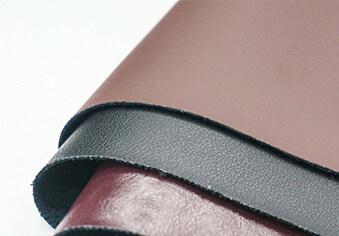Email format error
Email cannot be empty
Email already exists
6-20 characters(letters plus numbers only)
The password is inconsistent
Email format error
Email cannot be empty
Email does not exist
6-20 characters(letters plus numbers only)
The password is inconsistent

News

PU Leather vs. PVC: A Battle of Synthetic Superiority
PU leather and PVC leather have emerged as fierce competitors in the realm of synthetic materials. Though often mistaken for one another, these materials possess distinct characteristics that cater to different needs and preferences. Join us as we delve into the captivating world of synthetic leathers, exploring the nuances that set them apart and the applications where each one truly shines.
Understanding the Foundations
PU Leather: A Polyurethane Marvel
Polyurethane (PU) leather is a synthetic material that mimics the look and feel of genuine leather. Crafted from a blend of polyurethane and other additives, PU leather boasts a soft, supple texture that closely resembles its natural counterpart. This material has gained widespread popularity due to its affordability, durability, and versatility.
PVC: The Vinyl Virtuoso
Polyvinyl chloride (PVC) is a synthetic plastic material renowned for its strength and resistance to various elements. PVC has been a staple in the manufacturing industry for decades, finding applications in everything from construction to automotive interiors. When it comes to synthetic leathers, PVC offers a more rigid and structured alternative to PU leather.
Durability and Longevity
PU Leather's Lasting Impression
One of the most compelling advantages of PU leather is its exceptional durability. This material is resistant to scratches, abrasions, and wear, making it an ideal choice for applications that demand longevity. PU leather is also highly resistant to moisture and staining, ensuring that it retains its pristine appearance even after extensive use.
PVC's Rugged Resilience
While PVC may not possess the same level of softness as PU leather, it more than makes up for it with its rugged resilience. PVC is highly resistant to chemicals, oils, and solvents, making it an excellent choice for environments where exposure to harsh substances is a concern. Additionally, PVC is incredibly durable, able to withstand heavy use and extreme temperatures without compromising its integrity.
Versatility and Applications
PU Leather's Chameleon-like Adaptability
PU leather's versatility is one of its most compelling traits. This material can be crafted to mimic a wide range of genuine leather textures, from smooth and sleek to distressed and aged. PU leather finds applications in fashion, upholstery, automotive interiors, and even footwear, allowing designers and manufacturers to create products that exude a luxurious, leather-like aesthetic without the associated cost or ethical concerns.
PVC's Multifaceted Mastery
PVC's versatility extends far beyond its use as a synthetic leather alternative. This material is widely employed in the construction industry for pipes, window frames, and flooring, as well as in the automotive sector for interior trims and upholstery. PVC's ability to be molded into virtually any shape, combined with its resistance to various environmental factors, makes it an indispensable material across numerous industries.
Maintenance and Care
PU Leather's Low-Maintenance Appeal
One of the most attractive features of PU leather is its low-maintenance nature. This material is easy to clean and maintain, requiring only occasional wiping with a damp cloth or mild cleanser. PU leather is also resistant to fading and discoloration, ensuring that it retains its vibrant appearance for years to come.
PVC's Straightforward Upkeep
PVC is incredibly low-maintenance, making it a practical choice for applications where frequent cleaning and upkeep are necessary. This material can be easily wiped down with a damp cloth or mild detergent, and its resistance to various elements ensures that it remains in pristine condition even in challenging environments.
Environmental Considerations
PU Leather's Eco-Friendly Strides
In recent years, the manufacturing process of PU leather has undergone significant improvements to reduce its environmental impact. Many modern PU leather products are now made from water-based polyurethane, which significantly reduces the emission of volatile organic compounds (VOCs) during production. Additionally, PU leather is recyclable, further contributing to its eco-friendly credentials.
PVC's Ongoing Sustainability Efforts
While PVC has historically faced criticism for its environmental impact, the industry has made significant strides in addressing these concerns. Many PVC manufacturers now employ closed-loop recycling systems and have implemented measures to reduce the use of harmful additives. Furthermore, ongoing research and innovation in the field of PVC production aim to develop more sustainable and environmentally friendly alternatives.
Conclusion
Whether you're seeking the luxurious softness of PU leather or the rugged resilience of PVC, both materials offer unique advantages and applications. By understanding the nuances that set them apart, you can make an informed decision that aligns with your specific needs and preferences, ensuring that you choose the synthetic leather that best suits your requirements.

